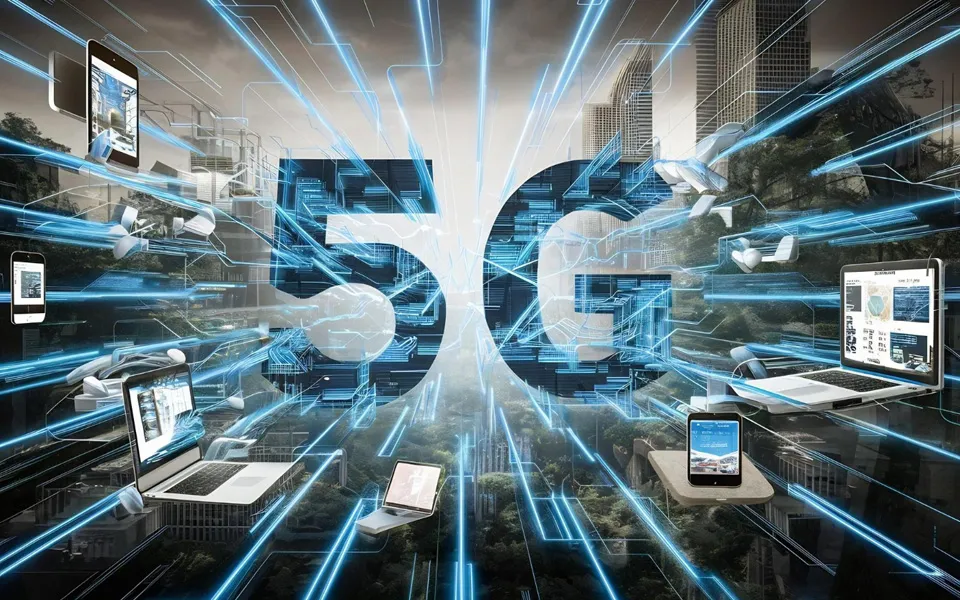The Security Challenges of 5G: A Comprehensive Analysis
The advent of 5G technology has been hailed as a game-changer, promising ultrafast speeds, enhanced security, and unprecedented connectivity. However, recent research sheds light on a significant aspect that demands attention—the security vulnerabilities inherent in the 5G infrastructure. As the deployment of 5G networks accelerates worldwide, it becomes imperative to address the security minefield lurking within.

The Promise of 5G:
5G technology represents a quantum leap forward in mobile communication, offering unparalleled speed, bandwidth, and low-latency connections. Its capabilities extend beyond traditional mobile devices to encompass a diverse array of IoT (Internet of Things) devices, ranging from smart-city sensors to agricultural robots. This proliferation of 5G-enabled devices heralds a new era of connectivity, bridging the gap where Wi-Fi is impractical or unavailable. Moreover, individuals may opt to replace conventional internet connections with home 5G receivers, further expanding the reach of this transformative technology.
The Security Landscape:
Despite its transformative potential, the rollout of 5G brings forth a myriad of security challenges. Recent research, to be presented at the Black Hat security conference, highlights the vulnerabilities present in the 5G platforms offered by carriers to manage IoT data. Technical University of Berlin researcher Altaf Shaik and colleague Shinjo Park uncovered alarming security flaws in the application programming interfaces (APIs) utilized by carriers to facilitate access to IoT data. These vulnerabilities, present across 10 mobile carriers globally, pose significant risks, ranging from unauthorized data access to direct manipulation of IoT devices on the network.
API Vulnerabilities:
The study scrutinized the APIs integral to accessing IoT data, revealing pervasive vulnerabilities across all examined carriers. Weak authentication mechanisms, inadequate access controls, and fundamental flaws in API design were among the identified issues. These shortcomings could potentially expose sensitive information such as SIM card identifiers, secret keys, and billing details. Moreover, researchers were able to exploit these vulnerabilities to access streams of other users’ data and even manipulate their IoT devices—an alarming revelation that underscores the gravity of the security lapses.
Platform Diversity and Implementation Challenges:
Compounding the issue is the absence of standardized designs for IoT service platforms within the 5G standard. Each carrier and company is tasked with creating and deploying their platforms, leading to significant variation in quality and implementation. This lack of uniformity introduces further complexity to the security landscape, as the efficacy of security measures varies widely across platforms. Additionally, the compatibility of upgraded 4G networks with IoT expansion widens the scope of carriers offering vulnerable APIs, exacerbating the security risks associated with 5G adoption.
Mitigation Efforts and Industry Response:
Upon discovering these vulnerabilities, researchers initiated disclosure processes with the affected carriers. While the majority of identified vulnerabilities are reportedly being addressed, significant concerns persist regarding the overall security posture of IoT service platforms. Shaik emphasizes the importance of robust security measures and monitoring mechanisms to safeguard against potential threats. However, the researchers’ ability to exploit these vulnerabilities without detection underscores a systemic lack of oversight within the industry.
Conclusion:
The revelations regarding 5G security vulnerabilities underscore the imperative for proactive measures to mitigate potential risks. As the deployment of 5G networks accelerates, stakeholders must prioritize security and adopt stringent measures to safeguard against emerging threats. Addressing the inherent vulnerabilities within 5G infrastructure is essential to realizing the full potential of this transformative technology while ensuring the integrity and security of IoT ecosystems. Only through collaborative efforts and robust security protocols can we navigate the security minefield and harness the benefits of 5G technology securely and responsibly.








